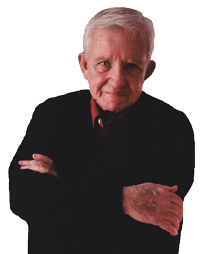When Allen Ginsberg was living in Harlem and going to Columbia in 1947, he rushed into the office of the College English Department one day and announced to a clump of professors having coffee or a smoke before class, “I have just seen the light!” Most of the professors smiled or turned away or mashed out cigarettes and went to their class, but Mark Van Doren, the Pulitzer Prize poet and popular Prof, asked the excited Ginsberg “What was it like?”
When I interviewed Ginsberg more than forty years later for my memoir of New York in the Fifties, he affirmed that the experience of “the light’ did not come from any drug but from reading the poetry of William Blake. He also noted that Van Doren, the only professor who was interested in hearing about it, “had a spiritual gift.” Van Doren was a poet himself.
When I heard my writer friend Susan Neville read Ginsberg’s poem “Sunflower Sutra” a few days ago at the taping of my WFYI radio show “Uncle Dan’s Story Hour” I felt high myself, without the aid of any substances. I think others present must have felt something similar, regardless of how they described their reaction to her reading. The magic of it was enhanced by a lovely and sensitive accompaniment from the saxophone of Sophie Faught and the piano of jazz musician David Amram.
As one man from the audience emailed the next day “the woman who read the poem with Dave and Sophie accompanying was a real high point treat.”
The music provided a beautiful background for the poem, and Neville’s reading was itself an artful rendering – it was as if she struck each word with an understanding of it, a sacred regard, that raised the language to a higher level of perception, a true “high” of appreciation.
For a few precious moments, I think we were lifted; I think we believed the message of the poem’s finale –
We’re not our skin of grime, we’re not dread bleak dusty imageless locomotives, we’re golden sunflowers inside, blessed by our own seed and hairy naked accomplishment-bodies growing into mad black formal sunflowers in the sunset, spied on by our own eyes under the shadow of the mad locomotive riverbank sunset Frisco hilly tincan evening sitdown vision.
Amen.
Bless you Allen, David and Sophie.

